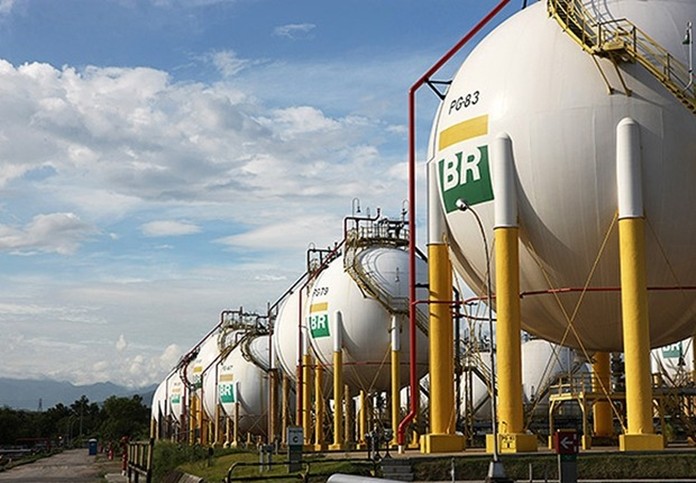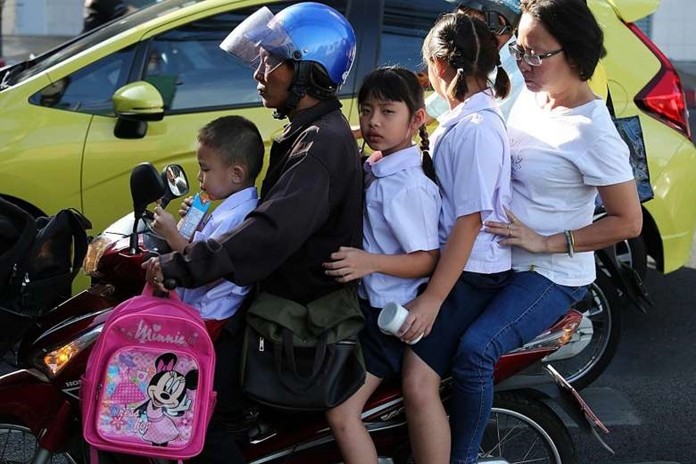Beijing (AP) — China’s auto sales sank 6.3 percent in September from a year earlier and purchases of electric cars tumbled 34.2 percent at a time when the industry is spending heavily to meet government sales quotas for the technology, an industry group reported Monday.
The global industry’s biggest market is on track to contract for second year, dragged down by weak consumer demand in the face of a tariff war with Washington and cooling economic growth.
Sales of sedans, SUVs and minivans in the global industry’s biggest market fell to 1.9 million, according to the China Association of Automobile Manufacturers, an industry group. Total sales, including trucks and buses, retreated 5.2 percent to 2.3 million.
Demand has suffered from consumer jitters over a trade war with Washington and slowing economic growth.
The industry has been reporting negative growth every month since June 2018.
Sales of electric cars fell to 80,000 units, hurt by a decline in government subsidies that helped to make China the biggest market for electrics.
Brands are spending heavily to meet government sales quotas. Beijing is shifting the burden to automakers by requiring them to earn credits for selling electrics without subsidies. That raises the cost to buyers.
For the first nine months of the year, auto sales were off 11.7 percent at 15.2 million.
In the same period, electric car sales were up 20.8 percent over a year earlier at 872,000. That reflected strong first-half demand before government subsidies were cut.
Sales of SUVs, previously a bright spot for the industry, were off 9.3 percent from a year earlier in the first nine months of the year. It gave no figure for total sales.
Sales by Chinese brands were off 9.8 percent at 727,000.
(There is a world-wide depression, with China, America and even Thailand’s production figures dipping year on year. All sorts of reasons have been put forward, but governmental involvement is one of the main ones. Subsidies stimulate buying, but then by removing the subsidy there will be a slump in sales. It is only a few years ago that the Thai government promoted the first car owners deal. A spike in sales figures resulted, repossessions followed and total manufacturing numbers also nose-dived. There is a lesson here, but reversing the trend is very difficult.)
F1 McLaren team lining up at the pumps
Rio De Janeiro (AP) — Brazil’s government says the state-controlled oil company has ended a nearly $200 million advertising agreement with Formula One team McLaren that had been criticized by President Jair Bolsonaro.
The Economy Ministry announced the cancellation, saying the five-year deal that took effect this year was “unjustifiable.”
Brazil suffered a devastating recession in 2015 and 2016 that sent unemployment surging. Since then, growth has averaged just over 1 percent annually and the International Monetary Fund (IMF) expects growth below 1 percent this year.
Bolsonaro took office in January and announced in May that his government was seeking a way to cancel the contract.

“Such matters are commercially confidential and therefore we are not able to comment further at this time,” a McLaren spokesman said.
The Brazilian government said Petrobras has a new focus on expanding production.
(Whilst McLaren has been doing better on the track than expected this season, there’s none of the F1 teams that can give $200 million worth of value. Even if Petrobras were giving away free petrol and a plastic toy.)
Physics be damned
I was taught that everything on this earth could be explained by using simple physics. I was given tommy twaddle.
A few years ago I looked at Lucas fuel pumps and how to get them going again with a bit of physical abuse. But another bit of engineering that defies physical laws lies in the universal joints in the propeller shaft. A kind of metal X with case-hardened caps filled with rollers. Despite all the greasing in the world, these things would always seize up, and you had to pull it all apart. Remember those days?
The owners manual made it look easy. (Those were the days when the manufacturer actually allowed you to touch the car. These days your warranty would become null and void and you would probably be subjected to some kind of exquisite electro-torture. Tomorrow you will be shot if you open the bonnet.) But back to the manual, plus pix of some chap in a dust coat. “Tap the yoke lightly and the bearing will appear” was what the good book says. Not one solitary word as what to do when the bearings didn’t appear – and they never did.
No, the tapping physical law does not exist. You have to get the biggest cold chisel you can and split the casing, and by the time you have thoroughly butchered it, then the bearing will appear – in bits. “Tap the yoke lightly” indeed! Physics be damned!
The Road Toll – again and again and again
I try to shy away from contentious subjects in this column, as it was designed to be a lighthearted look at things motoring, but sometimes a lighthearted look may not be appropriate. For the nation’s road toll, this is one of those times. Try 66 deaths per day for a start. And Thailand having the second highest road toll in the world.
What prompted me on this line of thought was the fact I was passed on the freeway by a very young schoolboy motorcycle rider and pillion passenger, complete with no crash helmet on either of them.
For those who have not been to Pattaya recently, you will find that Beach Road now has pedestrian traffic lights every 200 meters. However, unfortunately all these do is to instill a false sense of security for those on foot.
Now when we look at the road toll, what were prime factors?
- 75 percent of those killed are between 15-60 years.
- 75 percent of the people killed are male.
- 80 percent were riding motorcycles.
- 85 percent had no crash helmet.
- More than 50 percent of those injured had blood alcohol levels above the legal limit of 0.05. (Figures for blood alcohol levels of those killed are notoriously under-reported to avoid police/insurance problems.)

So what has been done? Even way back in 2001 the BBC reported that the Thai government was considering cutting short the country’s main holiday to reduce the number of traffic accidents and discourage Thais from going abroad. That is like saying they will ban all motorcycles from the road over holiday weekends. Impractical and would be rejected by the population.
In December 2010, the Thaksin University in Songkhla published a treatise in their website claiming 12,000 Thai people per year are killed, or 33 per day and doubling during the Songkran festival and New Year’s Day. The item went on to say that, “There are three major causes of road accidents in Thailand they are driver’s behaviors, mechanical failure, and road conditions.”
This idea that mechanical failures are prime factors has also been seized upon by governments, with a government spokesman saying that about 50,000 vocational students were to be sent to checkpoints and car maintenance spots across the country last year to provide vehicle inspection services over the New Year break.
It does not need a Mensa IQ score to see that diverting attention to vehicle maintenance is not going to change the road toll, but driver behavior and alcohol are related and have a direct effect on the total number of people killed.
However, the greatest numbers should be attacked as the first priority. 75 percent of fatalities come from motorcycles. If it were possible to prevent these, you would have lowered the death toll by 75 percent, but that is Utopian and not possible. But – if you could get the 85 percent who were not wearing helmets to wear a helmet of a decent standard then you would produce an immediate lowering of the annual toll.
This is not Utopian. The legislation regarding the wearing of helmets is already law – if this was policed properly, and it is not difficult to spot a motorcycle rider not wearing a helmet, then you would see a dramatic fall in the numbers.
Of course, I have stated it needs helmets “of a decent standard”. Again, this is not difficult. Apply US Snell or the British Standard to all new helmets sold in Thailand. Give the shops six months to clear the old stock and thereafter only helmets meeting the standards are allowed to be sold. This is also not difficult to police – a walk down the supermarket shelves will soon show whether the helmets have the certification.
The salient figures are already there, the legislation is already there. The members of the Think Tank committees can finish their morning coffee and go home.
But this is Thailand.
The ideal car for Pattaya?
The WaterCar Panther is probably the coolest amphibian and it’s surprisingly fast. Billed as the Fastest Amphibious Car in the World and is available for order so if you need a new car it might just be the ideal car for you but it costs about USD 135,000 in the US. Now add on freight and duty and you are probably looking at six million baht (very rough guess). However, you can drive it across the Pacific Ocean, I suppose, and at least you can put off getting a boat if you buy a panther.

The Panther website has a caution: The Panther is currently offered in two states of completion, Turnkey Minus and Complete Custom. Please note the Complete Custom version may be a challenge or impossible to license and register for street use in some states (and in Thailand). In those American states the Panther must be purchased as a Turnkey Minus and licensed as a specially constructed vehicle if used on the highway. There is federal legislation for low production vehicle manufacturers that will make the registration of Complete Custom models much easier. Check your local registration requirements before you order, and in Thailand, don’t make your hopes too high.
 |
 |
 |





